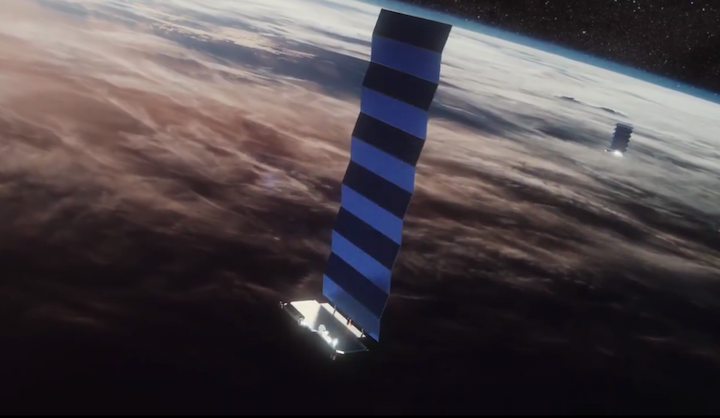4.02.2020

A group of astronomers has called for legal action to stop the launch of vast numbers of satellites designed to beam high-speed internet around the world until their impact on the night sky can be assessed.
US firm SpaceX has already launched 240 satellites as part of its planned Starlink constellation of up to 42,000 satellites. Others, such as the UK company OneWeb, plan to launch hundreds of their own. There are currently 1500 active satellites orbiting Earth.
Starlink satellites have created bright streaks in some telescope images affecting astronomical observations. Some worry that the thousands of bright points of light could alter the sky for the public and astronomers forever.
“The ideal thing would be to stop the deployment of these kind of satellites until the problem is very well studied. We have to understand what the impact is on the sky,” says Michele Maris at the Astronomical Observatory of Trieste in Italy, part of the group calling for legal action.
The group says that to halt mega constellations, a case could be brought to the International Court of Justice to argue that the night sky is a shared human right under the World Heritage Convention. “The harm here is damage to our cultural heritage, the night sky, and monetary damages due to the loss of radio and other types of astronomy,” the astronomers write. Or a case could be filed against the Federal Communications Commission (FCC) in the US for licensing Starlink, which the group says may have been in breach of the National Environmental Policy Act (NEPA).
“It would be desirable to adopt contingent and limiting resolutions to be ratified as shared international rules,” the astronomers write. They also suggest that in the meantime all mega constellations should be put on hold. An associated petition to temporarily halt further launches has more than 1400 signatures.
Chris Johnson, a space law advisor at the Colorado-based pressure group the Secure World Foundation, says that the chances of legal action being successful are slim, but there is an argument that could be made.
“It’s time for the larger space community to think what means more: ground-based astronomy and traditional views of the night sky, or cheaper internet from space,” he says.
The FCC said in a statement it “strongly reject[ed]” any claims it has violated NEPA and its approval of Starlink was “entirely lawful”.
SpaceX has attempted to ease concerns by testing a Starlink satellite coated in a darker material so that it won’t reflect as much light.
However, launches are ongoing, with SpaceX set to send up 1500 Starlink satellites in 2020.
“If it is not possible to leave a better planet for future generations, we can at least try not to make it worse,” says group member Stefano Gallozzi at the Astronomical Observatory of Rome in Italy.
Quelle: NewScientist
